Evaluation of Endothelial Dysfunction and Autophagy in Fibromyalgia-Related Vascular and Cerebral Cortical Changes and the Ameliorative Effect of Fisetin
- PMID: 35011610
- PMCID: PMC8750434
- DOI: 10.3390/cells11010048
Evaluation of Endothelial Dysfunction and Autophagy in Fibromyalgia-Related Vascular and Cerebral Cortical Changes and the Ameliorative Effect of Fisetin
Abstract
Fibromyalgia (FM) is a common chronic pain syndrome that affects 1% to 5% of the population. We aimed to investigate the role of endothelial dysfunction and autophagy in fibromyalgia-related vascular and cerebral cortical changes in a reserpine-induced rat model of fibromyalgia at the histological and molecular levels and to study the ameliorative effect of fisetin. Forty adult female albino rats were divided into four groups (10 each): two control groups, the reserpine-induced fibromyalgia group, and the fisetin-treated group. The carotid arteries and brains of the animals were dissected. Frozen tissue samples were used for total RNA extraction and qPCR analysis of eNOS, caspase-3, Bcl-2, LC-3, BECN-1, CHOP, and TNF-α expression. Histological, immunohistochemical (eNOS), and ultrastructure studies were conducted. The carotid arteries revealed excessive autophagy and endothelial, vascular, and apoptotic changes. The cerebral cortex showed similar findings apart from endoplasmic reticulum stress. Additionally, there was decreased gene expression of eNOS and Bcl-2 and increased expression of caspase-3, LC-3, BECN-1, CHOP, and TNF-α. In the fisetin-treated rats, improvements in the histological and molecular results were detected. In conclusion, oxidative stress, enhanced apoptosis, and excessive autophagy are fundamental pathophysiologic mechanisms of reserpine-induced fibromyalgia. Moreover, fisetin has an ameliorative effect against fibromyalgia.
Keywords: autophagy; endothelial dysfunction; fibromyalgia; fisetin; reserpine.
Conflict of interest statement
The authors declare no conflict of interest.
Figures
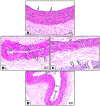
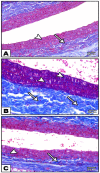
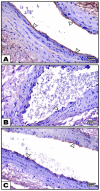
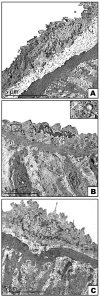

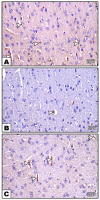
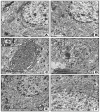
Similar articles
-
Stem cells therapeutic effect in a reserpine-induced fibromyalgia rat model: A possible NLRP3 inflammasome modulation with neurogenesis promotion in the cerebral cortex.Life Sci. 2023 Jul 15;325:121784. doi: 10.1016/j.lfs.2023.121784. Epub 2023 May 15. Life Sci. 2023. PMID: 37196857
-
Protective effects of Danzhi jiangtang capsule on vascular endothelial damages induced by high-fat diet and palmitic acid.Biomed Pharmacother. 2018 Nov;107:1631-1640. doi: 10.1016/j.biopha.2018.08.129. Epub 2018 Sep 7. Biomed Pharmacother. 2018. PMID: 30257381
-
Physcion, a tetra-substituted 9,10-anthraquinone, prevents homocysteine-induced endothelial dysfunction by activating Ca2+- and Akt-eNOS-NO signaling pathways.Phytomedicine. 2021 Jan;81:153410. doi: 10.1016/j.phymed.2020.153410. Epub 2020 Nov 18. Phytomedicine. 2021. PMID: 33285470
-
Short-term type 1 diabetes alters the mechanism of endothelium-dependent relaxation in the rat carotid artery.Am J Physiol Heart Circ Physiol. 2010 Aug;299(2):H502-11. doi: 10.1152/ajpheart.01197.2009. Epub 2010 Jun 11. Am J Physiol Heart Circ Physiol. 2010. PMID: 20543087
-
Chronic intermittent hypobaric hypoxia protects vascular endothelium by ameliorating autophagy in metabolic syndrome rats.Life Sci. 2018 Jul 15;205:145-154. doi: 10.1016/j.lfs.2018.05.008. Epub 2018 May 4. Life Sci. 2018. PMID: 29733850
Cited by
-
Molecular Study of the Protective Effect of a Low-Carbohydrate, High-Fat Diet against Brain Insulin Resistance in an Animal Model of Metabolic Syndrome.Brain Sci. 2023 Sep 28;13(10):1383. doi: 10.3390/brainsci13101383. Brain Sci. 2023. PMID: 37891752 Free PMC article.
-
Milnacipran and Vanillin Alleviate Fibromyalgia-Associated Depression in Reserpine-Induced Rat Model: Role of Wnt/β-Catenin Signaling.Mol Neurobiol. 2025 Jun;62(6):7682-7705. doi: 10.1007/s12035-025-04723-w. Epub 2025 Feb 10. Mol Neurobiol. 2025. PMID: 39924579 Free PMC article.
-
Next-generation precision medicine for suicidality prevention.Transl Psychiatry. 2024 Sep 6;14(1):362. doi: 10.1038/s41398-024-03071-y. Transl Psychiatry. 2024. PMID: 39242534 Free PMC article.
-
Neuroprotective effects of flavonoids: endoplasmic reticulum as the target.Front Neurosci. 2024 Jun 18;18:1348151. doi: 10.3389/fnins.2024.1348151. eCollection 2024. Front Neurosci. 2024. PMID: 38957188 Free PMC article. Review.
-
Mito-TEMPO Mitigates Fibromyalgia Induced by Reserpine in Rats: Orchestration Between SIRT1, Mitochondrial Dynamics, Endoplasmic Reticulum and miRNA-320.Neurochem Res. 2025 May 28;50(3):172. doi: 10.1007/s11064-025-04424-9. Neurochem Res. 2025. PMID: 40434586 Free PMC article.
References
-
- Jones G.T., Atzeni F., Beasley M., Flu B.E., Sarzi-Puttini P., Macfarlane G.J. The prevalence of fibromyalgia in the general population: A comparison of the American College of Rheumatology 1990, 2010, and modified 2010 classification criteria. Arthritis Rheumatol. 2015;67:568–575. doi: 10.1002/art.38905. - DOI - PubMed
-
- Son C.N., Kim S.H., Chang H.W., Kim J.M. A neurometabolite study of chronic daily headache in patients with systemic lupus erythematosus using magnetic resonance spectroscopy: Comparison with fibromyalgia patients and healthy controls. Korean J. Intern. Med. 2016;31:1171–1177. doi: 10.3904/kjim.2015.196. - DOI - PMC - PubMed
MeSH terms
Substances
LinkOut - more resources
Full Text Sources
Medical
Research Materials

